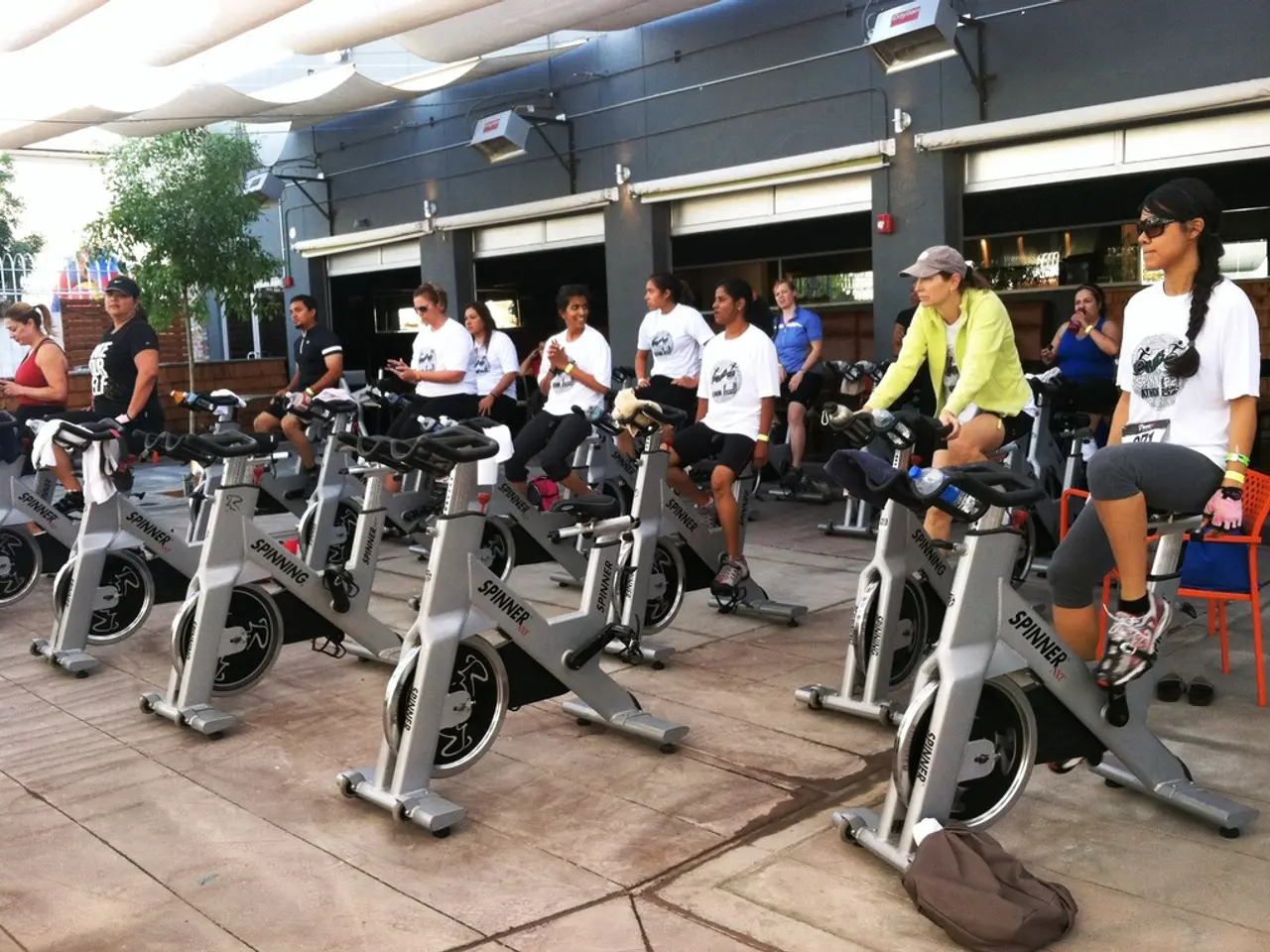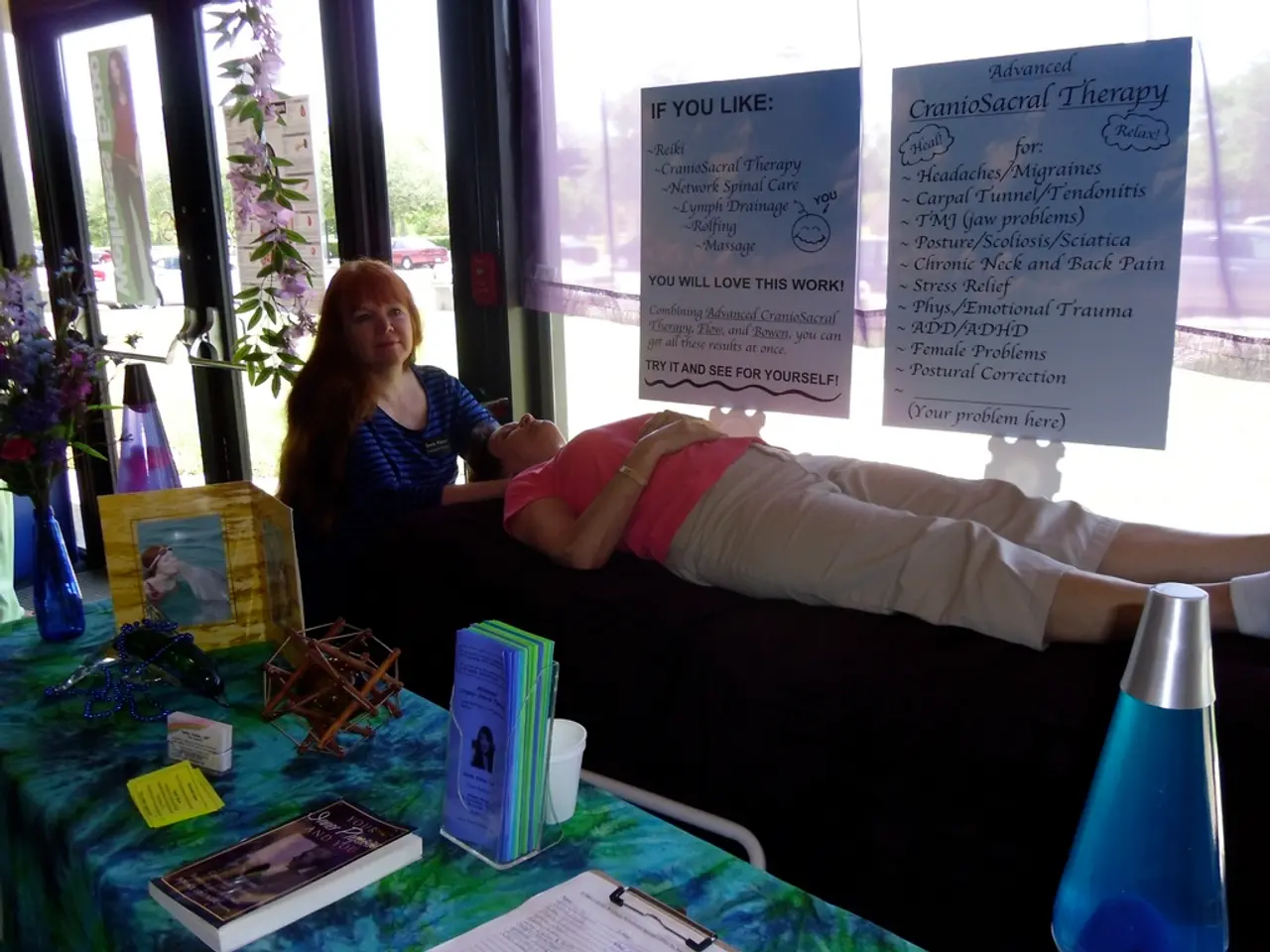Issues Frequently Encountered with Feet and Strategies for Their Avoidance
In the quest for long-term foot health, it's essential to understand the common issues that may arise and the steps to prevent them. Here's a comprehensive guide to help you keep your feet in tip-top shape.
- Bunions (Hallux Valgus)
- Causes: Often due to inherited foot structure, wearing tight or narrow shoes, or toe deformities that cause pressure at the big toe joint.
- Prevention: Wear bunion-friendly footwear that provides ample toe room, use toe spacers or splints to reduce pressure, and avoid shoes that crowd the toes. Severe cases might require surgery.
- Plantar Fasciitis
- Causes: Inflammation of the plantar fascia from overuse, flat feet or high arches, poorly fitting shoes, or prolonged standing. Tight calf muscles also contribute.
- Prevention: Use shoes with proper arch support and cushioned soles, stretch calf muscles regularly, use orthotics or night splints, and apply ice to reduce inflammation after activity.
- Ingrown Toenails
- Causes: Nail edges growing into surrounding skin, worsened by thickened nails with age, improper nail trimming, sweaty feet, obesity, or diabetes.
- Prevention: Cut toenails straight across (not rounded at the edges), maintain foot hygiene, and wear breathable shoes. Monitor feet regularly, especially if diabetic.
- Athlete’s Foot (Fungal Infection)
- Causes: Fungal infection often from moist, warm environments causing skin and nail infections. More common with age or weakened immunity.
- Prevention: Keep feet dry and clean, change socks regularly, avoid walking barefoot in communal areas, and use antifungal powders or sprays as needed.
- Corns and Calluses
- Causes: Form due to repetitive pressure or friction from poorly fitting shoes, or foot deformities like hammertoes or bunions.
- Prevention: Wear properly fitting shoes, use protective pads, reduce friction sources, and avoid prolonged standing on hard surfaces. Maintain foot moisturization to prevent cracking.
- Heel Spurs
- Causes: Often develop from repetitive stress or plantar fasciitis-associated inflammation leading to calcium deposits on heel bone.
- Prevention: Use supportive footwear, stretch calf muscles, avoid excessive high-impact activities without rest, and treat plantar fasciitis early.
- Hammertoes
- Causes: Toe deformities where toes bend downward due to muscle imbalance; caused by genetics, arthritis, or wearing tight shoes.
- Prevention: Wear shoes with a wide toe box, avoid high heels and tight footwear, use toe exercises or splints, and seek early treatment to prevent worsening.
General foot care tips: - Choose shoes that fit well and provide adequate support for your foot type. - Maintain good foot hygiene by washing feet daily and thoroughly drying them. - Trim toenails straight across to prevent ingrown nails. - Stretch calf muscles regularly to enhance foot flexibility and reduce heel pain. - Avoid walking barefoot in public places to reduce infection risk. - Monitor feet for changes or pain, especially if diabetic or with circulation issues, and seek professional care as needed.
Foot health is vital for staying mobile and active. By incorporating these preventative measures into your self-care routine, you can protect your feet from more serious medical interventions and ensure long-term foot health. If you encounter any issues or have concerns, consider consulting a podiatrist, such as one in East Stroudsburg, PA, for specialized, professional care tailored to your unique needs.
Science plays a crucial role in understanding common foot health issues like bunions, plantar fasciitis, ingrown toenails, athletes' foot, corns, calluses, heel spurs, and hammertoes. Health-and-wellness practices, such as choosing appropriate footwear, maintaining good foot hygiene, and staying mindful of self-care routines, can prevent or alleviate these issues. For instance, wearing bunion-friendly shoes can prevent pressure on the big toe joint, while regularly stretching calf muscles can reduce heel pain and enhance foot flexibility.




